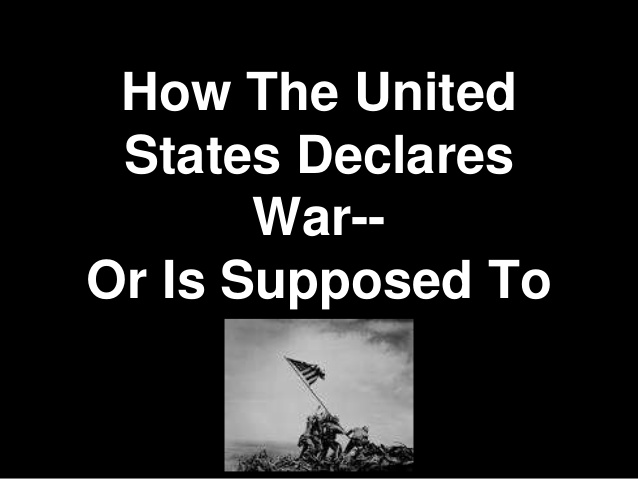How does the United States go to war? It’s not as clear cut as many think. And it’s been a while since we’ve done it as laid out in the Constitution.
The last time, as written in the Constitution, War was declared by a joint resolution of Congress and executed by the President was against Rumania (yes, spelled that way) on 4 June 1942.
Article One, Section Eight, of the Constitution declares that “Congress shall have the power to declare War.”. However, it’s not designated exactly how Congress does that. In fact, war isn’t in Section Eight until Clause 11, where it also allows us to hire pirates to attack our enemies. Seriously.
We’ve Declared War that Way 11 Times. The first was 17 June 1812 when we declared was against Great Britain.
On Mexico. 12 May 1846
On Spain. 25 April 1898
On Germany. 6 April 1917
On Austria-Hungary. 7 Dec 1917
On Japan. 8 Dec 1941
On Germany. 11 Dec 1941
On Italy. 11 Dec 1941
On Bulgaria, Hungary and Rumania. 4 June 1942
Korea, Vietnam, Dominican Republic, Grenada (remember those?), Lebanon, Iraq, Afghanistan, etc. etc. were Congress allowing the President to send our troops in harm’s way, which is opposite the way the Founding Fathers intended.
Technically we’re not even at war any more. The “War” in Iraq ended on 28 December 2014. The “War” in Afghanistan ended even earlier, on 15 December 2011.
We are currently are conducting military actions in six countries (that we know of publicly): Afghanistan, Iraq, Pakistan, Somalia, Yemen, and now, Syria. However, the real numbers is in the dozens given the deployment of drones and Special Operations Forces.
U.S. SOF (Special Operations Forces), of which I was a member, are deployed in over 100 countries around the world. The goal is normally to get others to fight a war on the side we desire or defend against aggressors. We also conduct Direct Action and Strategic Recon and some other things.
Carl Von Clausewitz, who by just saying his name makes you a military ‘expert’, stated that: Military Strategy
Above all, military leaders need a strategic goal. Unfortunately, such goals have been nebulous, ever since the last formally declared war: World War II. And thus, we actually have not truly ‘won’ a war. I’m not certain if such a thing is possible in the modern world. With the world remaining intact.
As contained in an unclassified CIA document, the definition of victory in the War on Terror is defined as: Victory against terrorism will not occur as a single, defining moment. It will not be marked by the likes of the surrender ceremony on the deck of the USS Missouri that ended World War II. However, through the sustained effort to compress the scope and capability of terrorist organizations, isolate them regionally, and destroy them within state borders, the United States and its friends and allies will secure a world in which our children can live free from fear and where the threat of terrorist attacks does not define our daily lives. Victory, therefore, will be secured only as long as the United States and the international community maintain their vigilance and work tirelessly to prevent terrorists from inflicting horrors like those of September 11, 2001.
From a military perspective I find the previous definition of winning rather vague and nebulous with no end-game. What must be factored in to our never-ending military endeavors is the military-industrial complex. Has war become so profitable that the United States will be in perpetual war so certain parties can make money? The War on Terror
We hope you’ve found this presentation useful. On The United States and War
A free slideshow on this topic and many others about interesting history, survival, writing and other topics is on my web site at www.bobmayer.com/workshops


Recent Comments